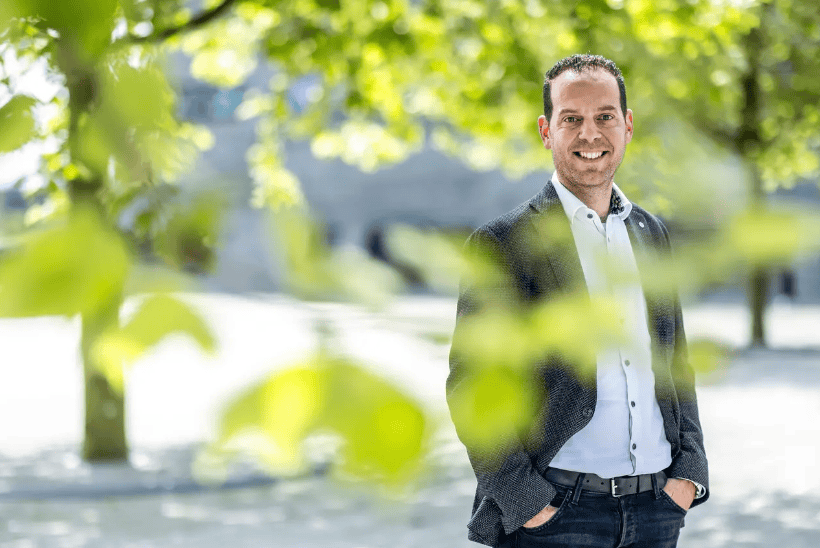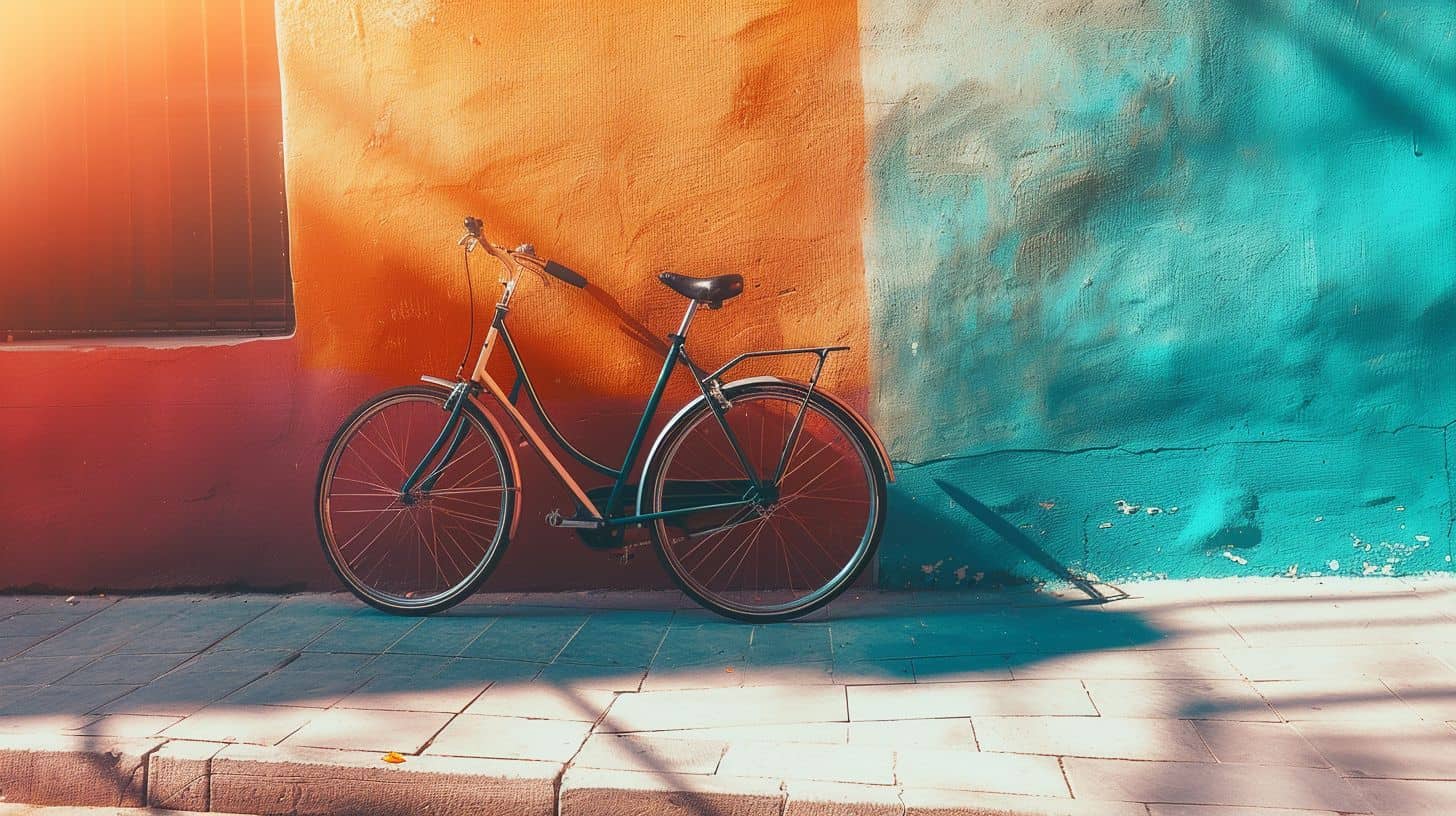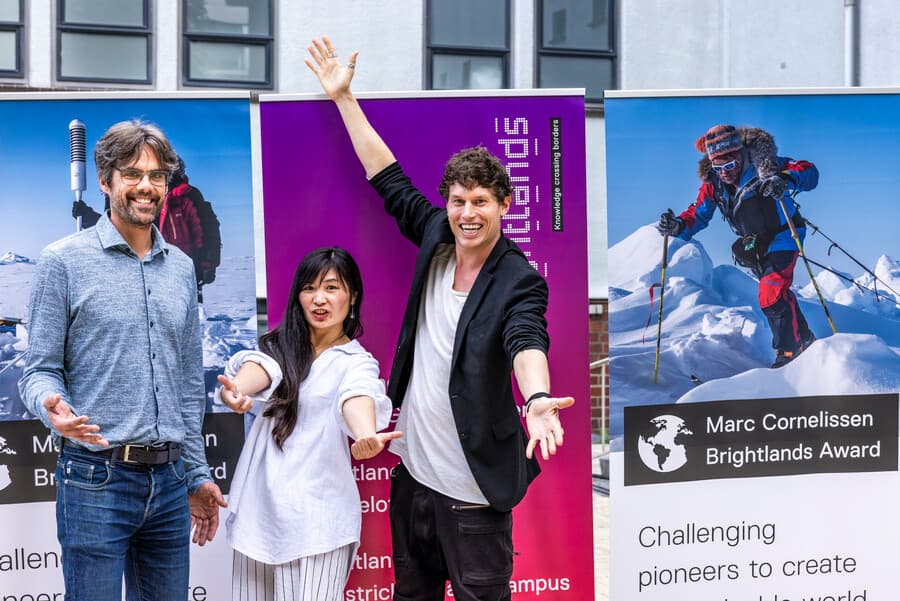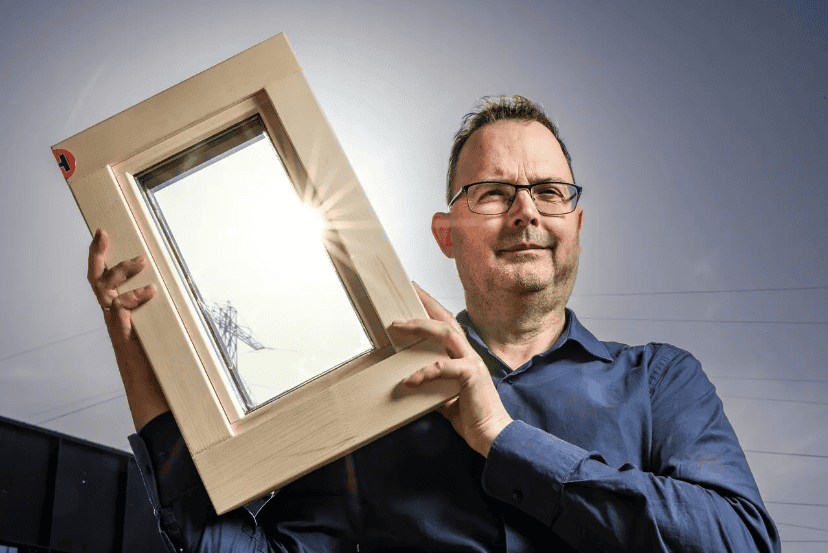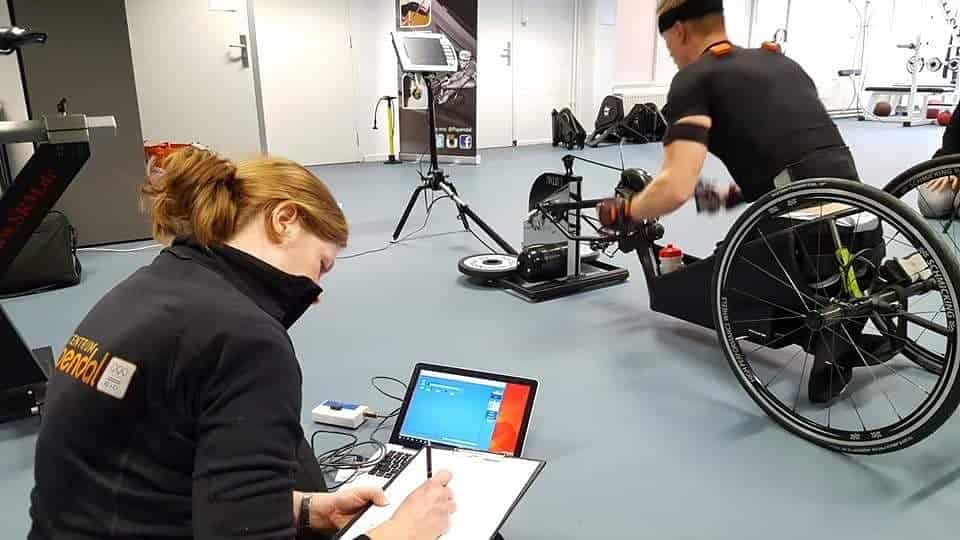
Handbiking is also called the Formula 1 of cycling. This is because materials play a very important role. No wonder Mitch Valize, World, European and National Champion is working at the Brightlands Chemelot Campus on innovating his handbike.
He has had a good season, clinched his titles again as well as added two more. His secret? Living like an elite athlete. His schedule can be compared to that of professional cyclists. Mitch Valize averages between 25 and 27 kilometers per hour on his handbike and the pros’ is time around 30 kph. “They make more kilometers, although in terms of hours, it is comparable. We’re a bit more in the strength zone.” Will he also venture into the hills? “Just last week I cycled from Heerlen to Monschau through the Ardennes there and back via the Eifel. That’s 150 kilometers in distance and 2000 meters in altitude.”
Cycling is a materials sport. “You can be as good as the best but if you don’t have an aerodynamic or lightweight bike or handbike you are never ever going to finish up on the winner’s podium,” Mitch states. Elite athletes, let’s say the top twelve in the world, ride lightweight carbon frames and ditto fairings that have an aerodynamic profile. Athletes who ride aluminum bikes, mostly novices, do not stand a chance.
Unlike in professional cycling, there is room in hand biking to improve the materials. This mainly involves focusing on aerodynamics.
Formula 1
“That makes all the difference. In my class, how you have your rear wheels positioned is really important. Those are in camber, just like the front wheels in Formula 1, and that’s only possible with carbon frames. When it comes to aluminum bodies, the wheels are usually just straight and there’s a larger frontal area. You normally sit in alignment on a racing bike, whereas we have our rear wheels next to us, so there’s a lot to gain if you can position those more effectively. Also, a lot is copied from the Formula One world.”
There are two major manufacturers in this sport that supply handbikes. One is Spanish and the other is American. Three-quarters of the peloton cycles on American-made materials, the rest cycle on Spanish bikes. Mitch Valize: “American models are slightly longer n length so you benefit from that on the flats. The longer they are, the more aerodynamic. But on corners, you deal with a bigger turning radius and you lose a bit of time because you have less maneuverability. It then comes down to the athlete themselves. I can catch that time up again in the turns by being more agile.”
CHILL
Valize’s handbike is constantly undergoing innovation at Brightlands, specifically at Chemelot Innovation and Learning Labs (CHILL). He became the Olympic champion in Tokyo with custom-made grips made there. “To some extent, my medal belongs to them,” Valize says expressing his gratitude.
His bike for the Paralympics in Paris (to be held in 2024) is already in the process of being assembled. Incidentally, such a handbike costs around €20,000. The frame alone is around €12,000. He would not be able to manage without sponsors. Not much progress can now be achieved when it comes to innovating the frame. “Those are carbon, rigid and lightweight which is important for handling on roads. One area where we can make gains is in the components on the bike.” “
“All cables are concealed on racing bikes. That’s a problem with ours. The gears are already completely electronic so we no longer have a visible cable there, but that is not the case for the brake cable. That’s on the handlebars but also on the pedals of the bike on the bars, so it runs all the time. Therefore, you have a cable running from the brake handle on your pedals to the brake on your front wheel. We want to get rid of that cable but we can’t because it would then spin on its own axis. That is why, together with CHILL and partner TSG Group, we are developing articulated gear couplings for the handbike.”
“That technology already exists but has not yet been applied in the bicycle industry. Eliminating that cable offers a lot of aerodynamic advantages because you no longer have a cable whipping through the wind all the time it doesn’t interfere with surrounding air as much.”
And what would that yield? “We know from racing bikes that if you get rid of the cables, you soon achieve a gain of five and ten percent. However, in the case of racing bikes, those cables remain fairly stationary, whereas on ours, they move around so we would expect the gain to be up to fifteen percent. Then we’re talking about time gains of tens of seconds. That cable not only creates air resistance but also rolling resistance since it hits your frame with every rotation.”

Paralympics 2024
Mitch and his team hope to test it next year so that the entire Dutch handbike squad can ride with it in 2024 at the Paralympics in Paris. And the competition? “Of course, they will be interested but then they will have to pay for it. By that time we will already be looking at innovations for the Games in Los Angeles. That’s how we hope to stay ahead.”
Mitch Valize is thinking about cassettes, chainrings and carbon disc brakes as a way to make his handbike even lighter. “You do get a bit more weight on the bike by using disc brakes because they are a bit heavier than rim brakes. But by adding carbon chainrings and disc brakes we can bring the weight down even more. They already make those for motorcycle Grand Prix and now they have to fit on racing bike wheels as well.”
Test bench
He also hopes to make more gains by making improvements to the wheels. “Because our rear wheels are angled these days, they don’t run over the tread but rather over the sidewall of the tire. We’re now going to look at the effect that has on rolling resistance. We will make a test setup with parties that have a test bench and run tests. Maybe we could make tires in which we move the tread to the side. Or, on the contrary, we have to make completely different rims so that the tire no longer rides at an angle on the asphalt but straight on the asphalt.”
As is the case in Formula 1, spray in rainy weather is an issue. This problem also needs to be solved in an innovative way. “No standard fenders fit on handbikes. We are also going to explore with CHILL whether we can print our own mounts that we can click onto the bike so that we will have less trouble with spray during training sessions. Because of their aerodynamic advantage, you are not allowed to ride with fenders in races.”
Also, according to Valize, the rear wheel hubs can be improved. “Those are the heaviest part of the whole wheel, so they can also be more lightweight. We have figured out a way to do that. By 3D printing the hub and axle, you can potentially make a lighter hub. If we do that, we can once again make gains over the competition.”



